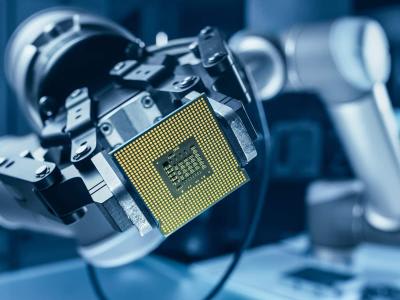Authored by Larry Keyler, Global Automotive Sector Leader, RSM US
Fossil fuels have shaped our transportation infrastructure for over a century now, and nowhere is this more evident than in the United States (US). As one of the “newer” nations on the block, our cities grew up around combustion vehicles, and are overwhelmingly designed to suit them. Wide streets, gas stations, parking lots and highways are all major features of American cities. As in many cultures, we Americans are so connected to our cars that we even created the concept of drive-in movie theatres.
But now that green energy is hitting its stride, we are seeing large scale attempts to transform every facet of modern life to more sustainable models. Nowhere is this more evident than electric vehicles (EV). After years of false starts, it appears that the EV industry is finally on the cusp of mainstream adoption. But before we get there, a few issues will need to be addressed.
Who’s behind the wheel?
EV technology has been around for ages now, but the industry never quite found a way to make the leap into the mainstream. One reason may be that EV battery life and charging station availability has affected acceptance of electric vehicles as a mainstream means of transportation.
We have seen tremendous growth in consumer demand for EV, particularly in the European Union and China. Having two of the world’s biggest consumer markets on board is helping to drive investment for further research and development, which of course, will make the offerings on hand more attractive for the end user.
And then you have the US, coming in at a distant third. Our adoption rate trails the EU and China by a mile, despite the fact that we are one of the largest consumers of vehicles in the world. With all eyes on the world’s richest nations at COP26, which took place in Scotland in November, the pressure is on the leaders of major consumers like the US to follow through on their pledges to take decisive, game changing action to cut carbon.
Therefore, it is critical that the US makes this transition quickly, and the responsibility rests on continued development of EV batteries with a longer charge life, better charging stations and related infrastructure and cultural adoption of EV by consumers.
Charging ahead
We know that a major deterrent to full-scale EV adoption is range anxiety - the fear of running out of power on a journey and not being able to find a changing point. To address the issue, governments and businesses will need to work together to expand the public charging infrastructure. To further complicate this issue, each geographic region will have their own set of challenges to deal with. Larger nations with vast stretches of desolate highways will need to make sure there are adequate stations for those long journeys. Smaller nations with less space or older cities will need to figure out how to squeeze charging stations into an already-crowded, outdated footprint.
Fortunately, EV range has been steadily improving, which will take some of the pressure off the infrastructure issue. When it comes to EV range, this is typically measured by Environmental Protection Agency (EPA) fuel economy numbers. As with gas vehicles' EPA fuel-economy estimates, there are also separate ratings for EVs' in-town and highway ranges. It is common for gas powered vehicles’ highway efficiency to exceed that of a town environment, but most EVs in fact boast higher in-town range ratings than highways. This is due to the use of low and variable speeds, and the way they recapture energy when decelerating by slowing the vehicle using the electric motor (or motors) rather than the traditional brakes.
Considering the combined range factors, the Nissan Leaf for example has capacity for 150 miles; Tesla, almost up to 370 miles. This is obviously very conducive to in-town driving, but longer, cross-country journeys of 1,000 miles will require more comprehensive coverage.
Limiting factors
Ultimately, there is a combination of factors curtailing more widespread EV adoption, which include insufficient battery life, inadequacies in charging infrastructure and limited public awareness. When it comes to the latter, this could be resolved through targeted marketing. We have been driving combustion engines for decades and dealing with an assortment of issues related to that technology. So, while it may be a tough sell to get us past our collective range anxiety, there are ways to manage the narrative to make the decision easier on the end user.
There is already a whole range of transportation systems taking advantage of EV technology, such as buses, trains, light rail, shuttles and taxis, and even urban scooters. Pointing to some of these success stories would no doubt help to alleviate fears and highlight the ease and convenience of EV technology.
That said, the aforementioned issues relating to infrastructure and range anxiety will need to be resolved before clever marketeers and advertising companies can “sell the dream”.
Keeping pace
The strategy for green energy expansion varies by region. The traditional approach for governments was to introduce regulations and mandates designed to put pressure on these industries. As many have learned, however, sometimes the carrot is more effective than the stick. Once regulators started shifting their strategy to a more incentive-based approach, the rates of adoption increased.
On the world stage, the EU and China are at the forefront of EV, but for entirely different reasons. The European Union is a heavily regulated market, but they employed an effective four-pronged approach that included mandates, incentives, education and awareness. Their ambitious “Fit for 55” programme seeks to incentivise manufacturers to achieve 55% EV adoption by 2030. EU manufacturers also did a great job of educating their consumer base, which led to high demand and an easier transition process. China is interesting because, for the most part, the government has not intervened much. While there has been some incentivisation, adoption in China has been driven by strong consumer demand, which happened much more organically.
Whereas here in the US, adoption has been much slower for a variety of reasons I have already outlined. However, there are signs that this could change as the government focuses its attention on EV as one piece of the climate change puzzle.
The Biden administration is banking on a combination of incentives, investments, mandates and subsidies (for both consumer and manufacturer) for the US to achieve 500% EV adoption by 2030. This is in-line with Biden's pledge to reduce US greenhouse gas emissions by 50% from 2005 levels by 2030.
We have already seen some evidence of action coming out of these pledges. At the end of November this year, Biden signed a $1 trillion infrastructure bill, which provides $7.5 billion in funding to further develop the nation’s EV charging network. Furthermore, it will provide the funding needed to build EV chargers along highway corridors and within communities to support both long-distance and local travel.
This significant investment aims to encourage more manufacturers to produce EVs and more citizens to buy them.
Speed bumps
The parallel narrative of consumer demand and the expansion of the US’ charging infrastructure remind me of the old chicken-and-egg debate. You need one to have the other, of course. Fortunately, we are already seeing the development of high-performance supercharging technology. Additionally, we are seeing EV that are more frugal in terms of their power use. This level of sophistication will continue to improve and evolve, and demand will evolve with it.
I have no doubt that the future will bring more charging stations, faster charging times, and (hopefully) more EV drivers on the road. Consumers will continue to adopt the technology as they see improvements in seamless travel, ease, and convenience. Word of mouth will likely play a huge role in this adoption, and this will take place in the driveways and office parking lots of the world.
In the interim, we may see charging stations pop up in main streets, shopping centres, and rest stops. We may even see shared charging stations in neighbourhoods, run by neighbourhood associations or Homeowner Associations (HOAs). They are expensive to install now, but like all technology, they will become more affordable and more accessible over time
The road ahead
Will EV be the next major technological evolution in human civilization? Perhaps it already is? More than 10 million electric cars were on the world’s roads in 2020 with battery electric models driving the expansion - a 43% increase over 2019.
This growth indicates that it will continue to revolutionise the way that we travel. It will transform our mobility ecosystem entirely. Our supply chains and priority on Cap X spending related to technology investment strategies will change given the research and development necessary to stay ahead of future technology developments. These investment strategies will create continued consolidation in the supply chain over the next ten years, given not every company will be able to keep up with the investments needed to stay in the game.
I recently attended a world conference with the RSM automotive team. During a casual conversation, I brought up my favourite childhood show, the Jetsons, and how they had flying cars. As a kid, that idea was so far beyond the realm of possibility, but three years ago, at the Detroit Auto Show, I personally saw prototypes for four-seater and two-seater drones. You get in, enter a destination into the GPS, and the drone autonomously flies you there (at a fraction of the cost of ground transportation). The push for sustainability is not only transforming how we produce energy, but it's also creating a shift in how we think about all technology.
The pace at which technology evolves is dizzying. Prior to 2007, the iPhone would have been science fiction. We can only imagine what the future holds for the mobility industry. I, for one, am happy to come along for the ride.
If you are interested in learning more about electric vehicles or have any other automotive issues that you would like to discuss, please get in touch.




